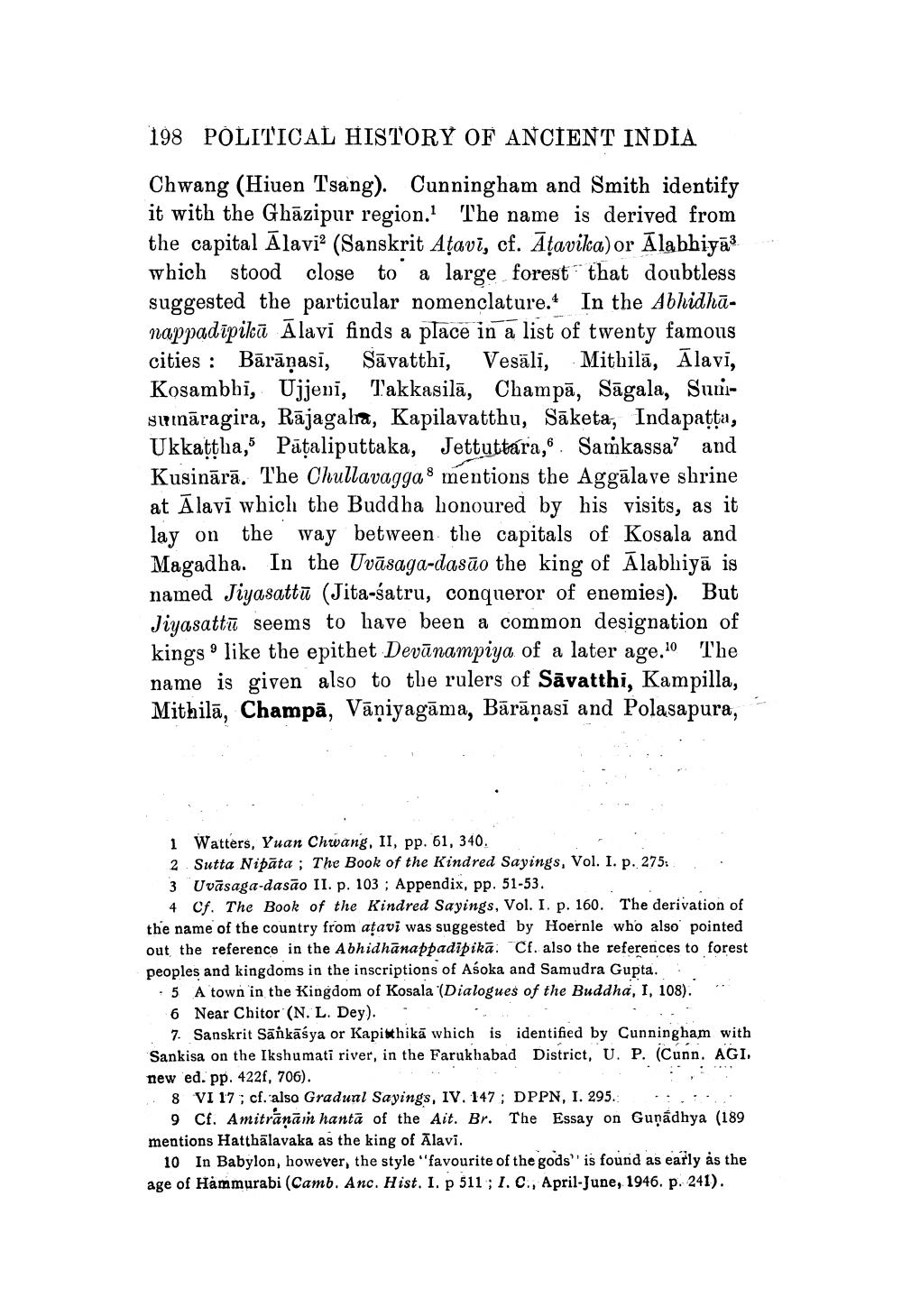________________
198 POLITICAL HISTORY OF ANCIENT INDIA
Chwang (Hiuen Tsang). Cunningham and Smith identify it with the Ghāzipur region. The name is derived from the capital Álavia (Sanskrit Ațavi, cf. Āțavika) or Alabhiyā) which stood close to a large forest that doubtless suggested the particular nomenclature. In the Abhidhānappadipilcā Ālavi finds a place in a list of twenty famous cities : Bārāṇasī, Sāvatthi, Vesäli, Mithila, Alavi, Kosambhi, Ujjeni, Takkasilā, Champā, Sāgala, Sunignaragira, Rajagara, Kapilavatthu, Saketa, Indapatta, Ukkattha, Pāțaliputtaka, Jettuttara, Samkassa? and Kusinārā. The Chullavaggas mentions the Aggālave shrine at Ālavi which the Buddha honoured by his visits, as it lay on the way between the capitals of Kosala and Magadha. In the Uvāsaga-dasūo the king of Alabhiyā is named Jiyasattā (Jita-śatru, conqueror of enemies). But Jiyasattu seems to have been a common designation of kings like the epithet Devūnampiya of a later age. The name is given also to the rulers of Sāvatthi, Kampilla, Mithilā, Champā, Vāņiyagāma, Bārāṇasi and Polasapura,
1 Watters, Yuan Chwang, II, pp. 61, 340. 2 Sutta Nipāta ; The Book of the Kindred Sayings, Vol. I. p. 275: . 3 Uvāsaga-dasão II. p. 103 ; Appendix, pp. 51-53.
4 Cf. The Book of the Kindred Sayings, Vol. I. p. 160. The derivation of the name of the country from ațavi was suggested by Hoernle who also pointed out the reference in the Abhidhānappadipikā. Cf. also the references to forest peoples and kingdoms in the inscriptions of Asoka and Samudra Gupta. • 5 A town in the Kingdom of Kosala (Dialogues of the Buddha, I, 108). **
6 Near Chitor (N. L. Dey). .
7. Sanskrit Sankāsya or Kapishikā which is identified by Cunningham with Sankisa on the Ikshumati river, in the Farukhabad District, U. P. (Cunn. AGI, new ed. pp. 422f, 706).
8 VI 17; cf. also Gradual Sayings, IV. 147; DPPN, I. 295. ... ..
9 Cf. Amitranāin hantā of the Ait. Br. The Essay on Guņádhya (189 mentions Hatthālavaka as the king of Alavi.
10 In Babylon, however, the style "favourite of the gods' is found as early as the age of Hammurabi (Camb. Anc. Hist. I. p 511 ; 1. C., April-June, 1946. p. 241).




